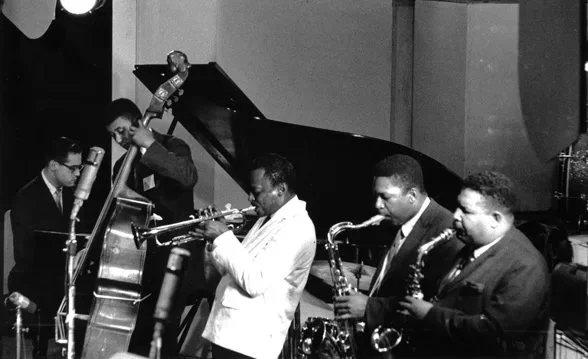The Small Group
Bill Evans, Paul Chambers, Miles Davis, John Coltrane and Cannonball Adderley.
Even though the trio is jazz’s foundation—and there are several legendary trios in its history—a typical jazz ensemble includes other solo instruments. Quartets, quintets and sextets allow room for brass instruments (trumpets and trombones) and woodwinds (saxophones, clarinets and flutes) to stretch out and solo with a rhythm section behind them.
That’s another name for that standard trio—the rhythm section—because it offers a rhythmic and harmonic backdrop for solo instruments. As we saw in the last section, the piano can play melody and harmony at the same time (melody usually in the right hand and harmony in the left hand. And the pianist can do this playing the melody or improvising.
When there is a horn or other solo instrument leading the way, the piano backs it up with two fisted harmonies (using both the left and right hand) while the horn takes the melody.
Alto saxophonist Art Pepper is one of the legends of the so-called West Coast Style of jazz, known for its smoother, easier sound. His celebrated 1957 recording, Art Pepper Meets the Rhythm Section, includes the standard, “You’d Be So Nice To Come Home To.” Have a listen.
The trio, led by Red Garland’s piano, starts off with a short introduction. Pepper enters with the melody (0:10) and plays it once through, the piano comping simply behind him. After playing the melody, he launches right into his solo (0:54).


